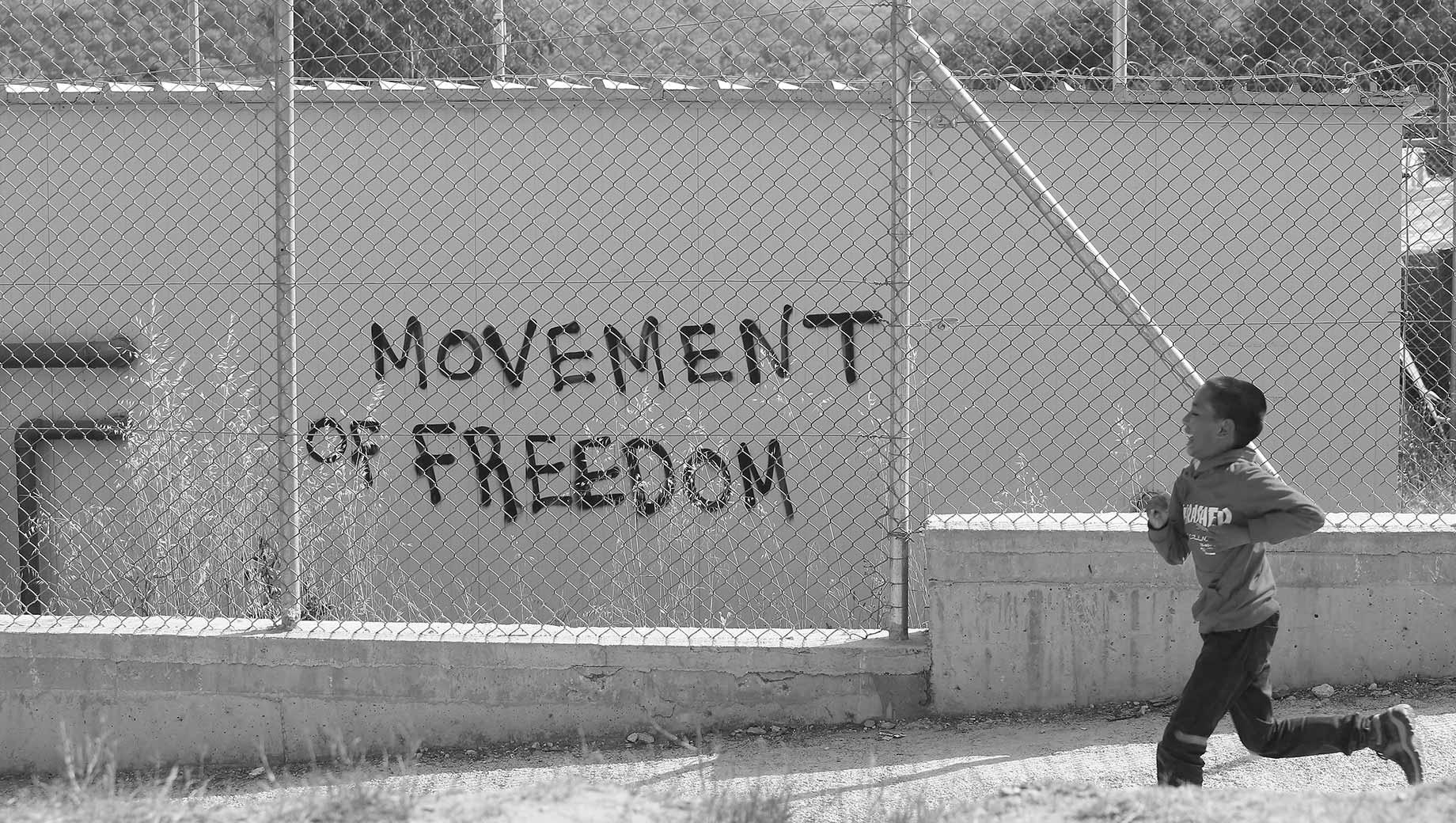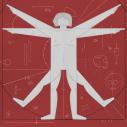Cultural Politics of Migration and Remittance in the Balkans
archive


Macedonians rally in Skopje during the "name dispute" with Greece, 2018. (Photo credit: Ognen Teofilovski / Reuters)
Cultural Politics of Migration and Remittance in the Balkans
The Age of Migration, a book by Castles, Haas, and Miller,1 points to the fact that the rise of international migration is one of the most important phenomena of the latter 20th and early 21st century. During the last five decades, the volume of international migration has grown enormously: from 82 million in 1975 to 175 million in the year 2000 and 232 million in 2013; the last figure represents 3% of the world’s population.
Partly in response to this phenomenon, anthropologists have increasingly turned their attention to migration, mobility, and the social groups they produce, such as refugees, tourists, and labor migrants. Moreover, they intensified their study of the cultural effects of the worldwide diffusion of commodities, technologies, and media products, as new communication and transportation technologies bridge vast distances in ever briefer intervals of time, thereby releasing people from geographically restricted communities of interaction. Cultural artifacts—not just material things but also political ideas, scientific knowledge, images of the future and interpretations of the past—travel further and more swiftly than ever before. They are available simultaneously almost everywhere. However, their accessibility is restricted to those social actors who have the economic means or the cultural capital to make use of them.
For example, recent research has emphasized the concept and importance of social remittances,2 which provide a distinct form of social capital between migrants living abroad and those who remain at home. To say that immigrants who build social fields keep them connected with those back home is not to say that their lives are not firmly rooted in a particular place and time, for they are as much residents of their new community as anyone else. They may migrate out of a desire for a better life, or to escape poverty, political persecution, or social or family pressures. Often these complex combinations of factors play out differently for women and men, affecting who gets to migrate, how that affects the migrants themselves, and how it transforms the sending and receiving communities.3
Patterns of Balkan Migration
The Balkans—migration champion of Europe—gained this reputation at the beginning of the 1990s as a result of diverse trends across the region. Migrations not only varied by location and trajectory, they also changed over time. Scholars differentiate three periods of migrations from the Balkans. The first, from 1989 to the mid-1990s after the fall the Berlin Wall, also marks the end of the wars in former Yugoslavia.4 This period was marked by the sudden explosion of migration, including both labor- and non-labor-related migration that had very different geographical trajectories in the Western and Eastern Balkans. The second period started after the Dayton Agreement of 1995 and intensified during the first decade of the new century, with the EU accession of Romania and Bulgaria (2007). This included a transition to post-conflict migration flows in the Western Balkans and the gradual Europeanization of migration from the Eastern Balkans. The third period has coalesced around the burgeoning reality of European integration for the region as a whole as labor and economic opportunity emerge as the central rationale for human migration.
Balkan migration flows may to be divided into two large groups: 1) “non-labor,” which may involve trafficking, retirement, or asylum; and 2) “labor migration” involving both emigration and circular migration—free movement and return, including diaspora returnees. Non-labor migration is extremely heterogeneous. The most worrisome form involves human trafficking, in which the biggest Balkan “exporters” are Albania and Romania followed by Bulgaria. The other two forms of migration in the first category are actually also related to labor; those who have been granted refugee status have the same rights to the labor market as the rest of the citizenry, while some representatives of retirement migration start their own businesses.
Labor migration has stable traditions in the Balkans, where it is referred to by such words as “gurbet” and “pechalbarstvo.” It is among the most stable sources of labor migration in Europe. The most common destinations for these migrants are Germany, Italy, Switzerland, Austria, the UK, Sweden, and Greece. Despite the diversity of types and destinations, labor migration today is a central feature of social life in the Balkan countries.5
The Balkans—migration champion of Europe—gained this reputation at the beginning of the 1990s as a result of diverse trends across the region.
The profile of the Balkan labor migrant unfolds in the wide expanse between two poles—so called “euro- plumbers” and “euro-stars.”6 The jobs of the first group often fall under the term “3D” (difficult, dirty, and dangerous). Migrants from the Balkans are a typical reflection of dual labor market theory, according to which there are job market sectors which are not attractive for locals and that are filled by a foreign workforce. In the EU case these sectors are construction, tourism, hospitality, domestic help, care for elderly, and so on.
The second category of migrants (“euro-stars”) is associated with a different label: “brain drain.” This category of migrants is at the center of political and academic discourse in each of the Balkan countries since many believe it a serious curse for fragile economies of the region because it diminishes human capital among the most highly qualified and innovative segment of the workforce.

Graffiti plays on a core tenet of the European Union's Acquis communautaire
Macedonia: As Case Example
Since the fall of the Berlin wall in 1989, Macedonia has faced ongoing challenges in social development. It is an ethnically diverse and religiously divided society wracked by ethno-political and economic instability, which engenders continuous waves of human mobility. The so-called “name dispute” with Greece created obstacles for Macedonia’s formal integration into European Union and also imposed numerous legal limitations on human mobility—which was not the case with the EU ascension of Bulgaria, Romania, Croatia, and Greece. Looking for a better life, citizens of Macedonia found alternative ways to realize their aspirations for access to Western EU states by, for example, acquiring Bulgarian citizenship, seeking political asylum, and establishing companies in EU member states.
Statistical data suggest that in last decade more than half a million people emigrated from Macedonia. This constitutes 25% of the total population according to the last census of 2002. A new census that began in 2011 was interrupted by controversies that erupted a few days before the end of the process of registering national inhabitants. One reasonable explanation for halting the census was that the absence of 25% of the country’s total population could have serious political consequences, especially for the implementation of the Ohrid Framework Agreement, the peace treaty that ended hostilities between Macedonian rebels and the Albanian government in 2001. The treaty provided a path toward the establishment of what is today the Republic of North Macedonia, a country that is at once proud of its distinctive identity, but nevertheless reliant on a mobile and geographically expansive populous.
The great wave of emigration from Macedonia in the last decade has had a strong influence on the social, cultural, economic, and political life of the country. Today, the landscape is dotted with empty villages and towns featuring new western architecture that reflect the changes that have taken place in socio-cultural microsystems and the habitus of individuals. Migration also establishes “new traditions” especially regarding customs related to the life cycle (birth, marriage, and death), which are now marked by mobility and disjuncture as well as tradition. Identity conflicts are furthermore emerging as a product of the new social boundaries and new collective cultural affinities fostered by migration.
Consequently, emigrants and emigration organizations are becoming more influential in the public and political life of Macedonia. Their investment in the domestic economy is very welcome and substantial, and they now have three reserved seats in the Macedonian parliament. Yet their visibility complicates politics on the ground. For example, their voice in the “name dispute” with Greece has been very loud in public media, adding to tensions to an already volatile situation. Thus migration is arguably nurturing regional and European integration while at the same time engendering new tensions that are fostered by non-resident populations that wield potent influence over the political life of their “home country” via the phenomenon of economic remittances.
1. Castles, Stephen and Mark J. Miller (2003). The Age of Migration. London: Palgrave Macmillan.
2. Levitt, Peggy and Deepak Lamba-Nieves (2011). “Social Remittances Revisited.” Journal of Ethnic and Migration Studies, 37:1, 1-22, DOI: 10.1080/1369183X.2011.521361. These transfers of socio-cultural meanings and practices occur either during the increased number of visits that immigrants make back to their home countries, or through visits made by non-migrants to friends and families living in the receiving countries, or through the dramatically increased forms of correspondence such as emails, online chat sessions, telephone calls, CDs/ VDOs, and traditional letters.
3. Pries, L. (2001) The Approach of Transnational Social Spaces: Responding to New Configurations of the Social and the Spatial. In: Pries, L. (ed.) New Transnational Social Spaces. International Migration and Transnational Companies. London, Routledge, pp. 3-33.
4. Brunnbauer, U., 2012, “Labour Migration and Transnationalism in the Balkans. A historical Perspective,” in (Hristov P. ed.) Migration and Identity: Historical, Cultural and Linguistic Dimensions of Mobility in the Balkans. Institute of Ethnology and Folklore Studies, Ethnographic Museum, Bulgarian Academy of Science.
5. Ibid.
6. Zemon, R., 2017, “Anthropological Approach on Migration, Mobility and Transnationalism between the Balkans and EU Members States,” in Terrorism, Migration, Refugees: Contemporary Challenges on Cultural Identities - Heritage, Economy, Tourism and Media. Conference Proceedings of the 4th International Conference “Ohrid- Vodici,” 2016.



